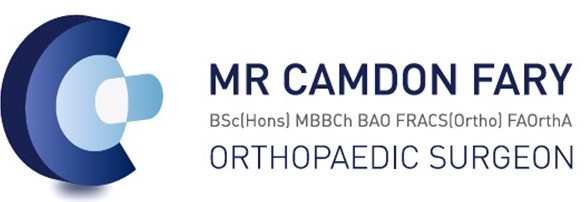What are ligamentum teres tears?
The ligamentum teres is a cord like structure that connects the femoral head to the acetabulum.
The hip joint is a ball and socket joint, made up of the top of the thigh bone called the femoral head (the ball) and the part of the pelvis called the acetabulum (the socket). The ligamentum teres sits deep in the joint and helps hold the joint in place.
Tears of the ligamentum teres are commonly found with other problems in the hip such as femoroacetabular impingement (FAI) and labral tears. It is a common condition found in dancers and gymnasts.
It can be difficult to diagnose a ligamentum teres tears, as MRI scan is currenly not accurate enough to reliably diagnose it.
Fortunately, these tears can easily be diagnosed and treated by hip arthroscopy.

-
Symptoms
What are the symptoms of a ligamentum teres tear?
If you have a ligamentum teres tear, you will have discomfort in your groin.
Initially, the pain may only felt whilst playing sport especially if you are involved in dancing or gymnastics.
With time, you may feel pain with any movement that brings your knees towards your chest, such as:
- sitting in low chairs
- getting up from chairs
- driving
- putting on your socks and shoes
- picking things off the ground
- climbing stairs
If you are involved in gymnastics or dancing, you will not be able to perform your usual hip movements and you may feel that your hip is unstable.

-
Causes
- Hip dislocation. If your have been in a severe accident in which you dislocated your hip, then your ligamentum teres would have been torn.
- Femoroacetabular Impingement (FAI). Tears of the ligamentum teres are very common in patients with FAI.
- Sports and Activities. Dancers and Gymnasts are at risk of developing tears due to the hip flexibility required in these activities.
-
Risk Factors
What are the risk factors for developing tears of the ligamentum teres?
- Femoroacetabular impingement (FAI). Femoroacetabular impingement is highly associated with ligamentum teres tears. It is not uncommon to need to treat both problems during a hip arthroscopy.
- Dancers and Gymnasts. Due to the flexibility and movements needed for dancing and gymnastics, tears can occur.
-
Investigations
There are currently no investigation that can accurately diagnose ligamentum teres tears.
A ligamentum teres tears is often diagnosed on your symptoms and examination.
Often the Xray, Ct scan and MRI do not show a tear.
An injection of local anaesthetic and corticosteroid can be helpful. If the injection relieves your pain, than it is very likely that your pain is coming from your hip joint.
A hip arthroscopy is the best way to diagnose and treat a ligamentum teres tear.
-
Complications
Ligamentus teres tears is assocaited with inflammation of your hip joint.
This inflammation causes increasing pain with hip movement, sitting and even sleeping on your side.
People with ligamentum teres tears also have synovitis / inflammation of other parts of your hip joint, such as the capsule. The capsule is the envelope of tissue that surrounds your hip joint.

-
Treatment
Ligamentum teres tears are usually treated with a special device called a radiofrequency ablator.
It’s a device that helps remove the inflammed torn tissue and stabilises the torn ligament.
-
Seeking Advice
Your Family Doctor (GP)
Your Family Doctor will be able to diagnose and help treat your problem. He or she will be able to
- tell you about your problem
- advise you of the best treatment methods
- prescribe you medications
- and if necessary, refer you to an Orthopaedic Surgeon for further treatment
Trustworthy Resources and Evidence Based Medicine
Sports Physician
Is a doctor who specialises in sports injuries. A Sports physician is well trained to diagnose the tear and help you though your treatment before and after your surgery.
Physiotherapist
The physiotherapy for ligamentum teres tears is highly specialised and requires extra training. Standard hip exercises can actually make the pain worse and delay your recovery. A well trained physiotherapist can show you which exercises to perform, and which not to perform.
Orthopaedic Surgeon
An orthopaedic surgeon trained in hip arthroscopy will be able to treat your tear. As hip arthroscopy is a specialised technique, your orthopaedic surgeon may need to refer you to a surgeon who has been trained in the technique.

-
Prevention
Ligamentum teres tears are associated with femoroacetabular impingement.
If you have femoroacetabular impingement, hip arthroscopy may help prevent tears of your ligamentum tears.
Unfortunately, there is no definite way to prevent the tears.
-
FAQ’s
What is the recovery like after surgery of ligamentum tears?
It depends on how much damage has occurred to your hip joint.
In general after hip arthroscopy:
- Most people can go home the next morning.
- It’s best to take at least 2 weeks off work to recover properly.
- Office work: 2 weeks
- Manual work: 6 weeks
- A full regime of return to sport and work will be tailored to your needs by our physiotherapy team. In general:
- 4 weeks: stationary cycling
- 6 weeks: slow tread-mill until running.

You must be logged in to post a comment.